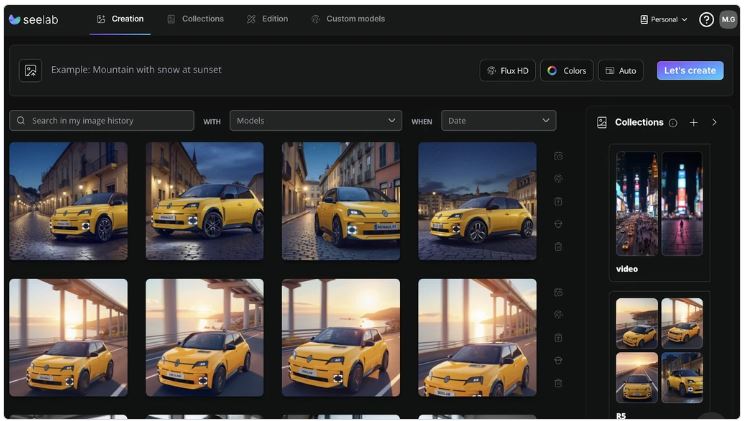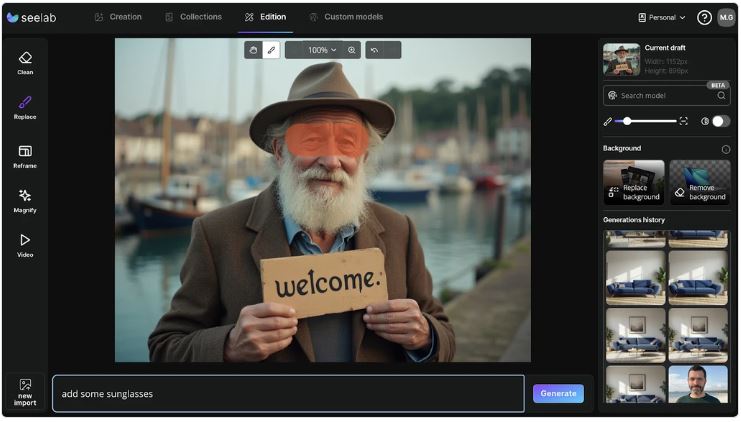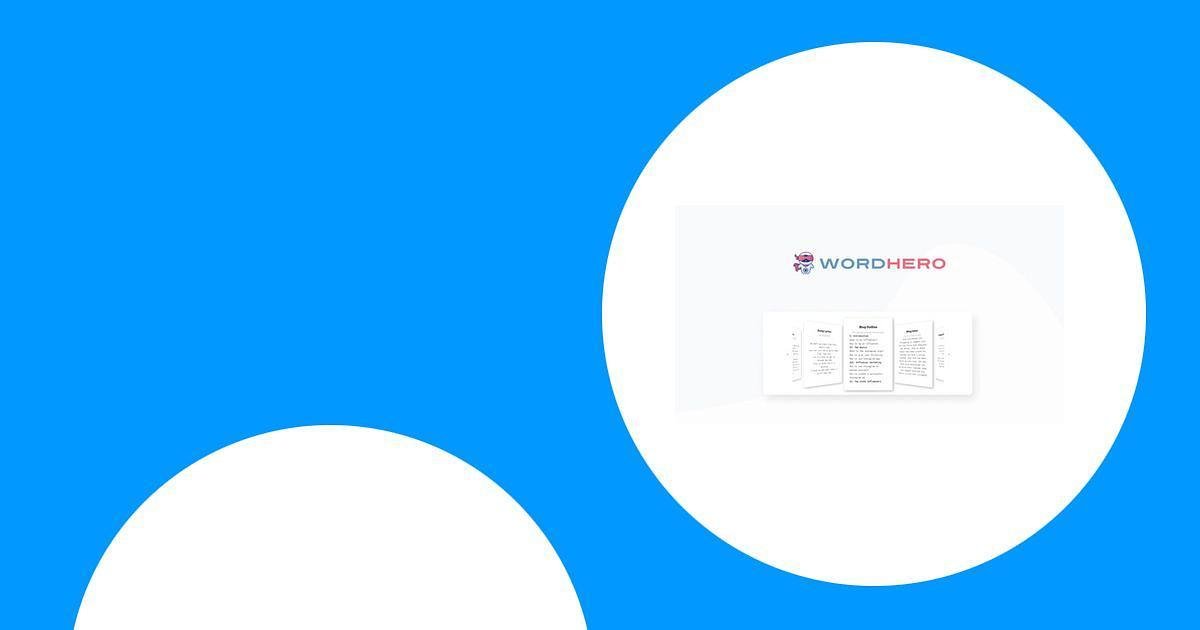Let’s admit: I used to dread the words ‘brand image refresh’—visions of endless photo shoots, hours lost in Photoshop, and budgets vanishing into thin air. But stumbling across Seelab’s lifetime deal on AppSumo, I had to know—could one platform really change my creative workflow for good? Here’s everything I discovered after seriously putting Seelab through its paces (and even pestering the founders via their FAQ)! If you’re looking for the nitty-gritty—including whether Seelab will finally help your brand stand out—read on.
Grab the Seelab Lifetime Deal Today!
Table of Contents
ToggleThe Seelab Experience: Beyond Yet Another AI Tool
When I first heard about Seelab’s AI image generation features, I’ll admit, I was skeptical. Could a platform really replace the hassle (and cost) of traditional photoshoots, or even my go-to stock photo sites? After spending some time with Seelab, I can say it’s not just another AI tool—it’s a genuinely different experience in the world of creative marketing.
Let’s start with the big question: Did Seelab actually replace my need for stock photos or expensive photographers? For most of my marketing visuals, the answer is yes. Seelab’s AI image generation lets me create on-brand assets in minutes, using simple text prompts or reference images. I’ve generated everything from product shots to quirky avatars, all without booking a studio or trawling through generic stock libraries. The real kicker? I can train a custom AI model on my own brand style in about 30 minutes. That’s a game-changer for anyone who wants consistency across campaigns.
Now, about the process itself—using Seelab features like prompt-based generation and custom model training is surprisingly intuitive. I fed the platform a handful of my product photos, hit “train,” and waited (impatiently) for half an hour. The results? Honestly, some images nailed my brand’s vibe so perfectly I had to double-check I hadn’t uploaded them myself. There were a few hilarious fails too—like the time my “minimalist coffee mug” prompt produced a mug with three handles and a floating spoon. But overall, the AI got smarter with each tweak, and the ability to iterate quickly made the process fun, not frustrating.
Seelab editing tools deserve their own spotlight. The in-app editor is refreshingly powerful. I could erase unwanted objects, replace backgrounds, and even inpaint missing details with just a few clicks. The background clean-up tool is oddly satisfying—way smoother than what I’ve experienced in Canva or even Photoshop. Plus, the option to export as SVG means I can use these visuals anywhere, from web banners to print. It’s rare for an AI platform to offer this level of editing control without feeling clunky or overwhelming.
Collaboration is another standout Seelab feature. The shared moodboards let my team collect, review, and refine images together, all in one place. No more endless email threads or lost file versions. It’s a simple addition, but it makes the whole creative workflow feel less chaotic and more, well, collaborative.
Privacy is a big deal for me, and Seelab’s approach is reassuring. As founder Matthieu Grosselin puts it,
Seelab was born out of our frustration with generic AI tools.
The platform guarantees that any custom models I train stay private and proprietary—no risk of my brand assets being repurposed elsewhere. That’s a promise I haven’t seen from many other AI image generators.
Research shows that Seelab’s advanced editing options and collaborative collections set it apart from generic competitors. The ability to create, edit, and share on-brand visuals—without ever leaving the platform—streamlines my marketing workflow in a way that feels genuinely modern. For anyone tired of cookie-cutter AI outputs, Seelab’s blend of customization, privacy, and real creative control is a breath of fresh air.
Grab the Seelab Lifetime Deal Today!

Deal Dynamics: Are Seelab’s Lifetime Plans Actually Worth It?
Let’s get real about the Seelab lifetime deal on AppSumo. If you’re like me—juggling tight marketing budgets and always on the hunt for smarter, scalable tools—these kinds of lifetime deals are both tempting and a little nerve-wracking. Seelab’s pricing is refreshingly clear: four tiers, each with a fixed one-time payment ($79, $129, $219, and $399), and each unlocking a specific set of monthly credits, features, and model allowances. But does the math actually work out for most users? And what happens when you hit those limits?
Breaking Down the Tiers: What You Get (and What You Might Actually Use)
Here’s the nuts and bolts: Tier 1 gets you 1,250 image credits per month, Tier 4 jumps to 10,000. Background removals, reframings, and object replacements also scale from 125 to 1,000 per month. Custom model slots are limited—just one on Tier 3, five on Tier 4. For many solo creators or small teams, Tier 1 or 2 could be enough. But if you’re running a busy agency or need to support multiple brands, those caps start to feel tight, fast.
Case in point: midway through a product launch, I burned through my image credits way sooner than expected. It’s easy to underestimate how quickly those numbers add up when you’re iterating on visuals or collaborating with a team. Seelab’s transparent dashboard helps, but you’ll want to keep an eye on usage—especially if you’re considering the lower tiers.
Grab the Seelab Lifetime Deal Today!
What the Founder Says: Why Limits Exist (and Why It’s Not Just “Tech Jargon”)
One thing I appreciate about Seelab is the open communication from founder Matthieu Grosselin. When users pushed for more generous custom model slots, the response was candid: GPU costs for training these models are significant, and unlimited access just isn’t sustainable at these price points. It’s not just a throwaway line—running advanced AI on Google Vertex AI infrastructure isn’t cheap, and those costs have to be balanced somewhere. In Grosselin’s words:
Seelab is the ‘Creative AI Sidekick’ every marketing team needs.
That “sidekick” role means you get powerful tools, but within a framework that keeps the platform viable for everyone. Research shows this tiered structure is designed for cost-control, making Seelab’s AppSumo lifetime deal straightforward and transparent—though it may hinder high-volume teams who need more flexibility.
Money-Back Guarantee and Scaling Up (or Down)
Here’s a huge plus: every Seelab lifetime deal comes with a 60-day money-back guarantee. That’s more than enough time to put the platform through its paces and see if the credits, features, and model limits fit your workflow. If you outgrow your tier, you can upgrade by stacking codes within the activation window. And if you realize you need less, you’re not locked in—just request a refund. All future plan updates are included, so you’re not missing out on new features down the line.
Bottom line: Seelab’s lifetime deal structure is built for clarity and control. The limits are real, but so is the value—especially if you’re focused on brand consistency and want a reliable AI image generation platform without ongoing fees. Just be honest about your usage, and you’ll know if Seelab’s pricing model fits your needs.
Grab the Seelab Lifetime Deal Today!

Privacy, Collaboration, and Niche Perks: What Sets Seelab Apart?
If you’ve ever hesitated to upload sensitive client assets to a cloud-based design tool, you’ll understand why Seelab’s GDPR compliance is such a big deal. I’ve worked with enough agencies to know that data privacy isn’t just a checkbox—it’s a non-negotiable. Seelab stores all user data in the Netherlands and Ireland, both under strict GDPR regulations. Before I even considered uploading my client’s product shots, I dug into their privacy policy and checked the legal FAQs. Everything pointed to airtight compliance. That peace of mind is rare in the AI platform space, especially when compared to some U.S.-based tools where data storage locations are vague at best.
What really tipped the scales for me, though, was the way Seelab handles intellectual property. Unlike other platforms, where your custom-trained models might get recycled or used to improve the company’s own AI, Seelab guarantees that your models remain yours—full stop. As one user put it:
Users retain full IP ownership over custom models, which was a game-changer for our agency work. – DigitalGrowthHacksClubPLUS
For agencies and brands handling proprietary client data, this level of granular privacy control is essential. Research shows that many creative teams are now prioritizing platforms that offer this kind of data sovereignty, and Seelab delivers on that front.
Grab the Seelab Lifetime Deal Today!
Collaboration That Actually Works
Moving beyond privacy, Seelab’s collaborative features are surprisingly robust. My first real test was a remote moodboard session with a distributed team. In other tools, feedback tends to get lost in email threads or buried in comment chains. With Seelab, everything lives in a shared collection—images, edits, notes, and all. The moodboard system is more than just a gallery; it’s a live workspace where everyone can contribute, iterate, and see changes in real time. This made our workflow feel less like a relay race and more like a true team effort.
Seelab’s integration with Google Vertex AI and APIs like Gemini adds another layer of flexibility. We could pull in assets, generate new visuals, and even refine prompts collaboratively. Compared to legacy platforms, the difference is night and day. Feedback is immediate, and asset sharing is seamless—no more version control nightmares.
Seelab vs Adobe and Canva: The Niche Perks
Let’s talk about how the Seelab AI platform stacks up against industry giants like Adobe and Canva. While both Adobe and Canva offer powerful editing tools, Seelab’s unique selling points are hard to ignore. The ability to train proprietary custom models means I can generate visuals that are truly on-brand—no more settling for generic AI art. The in-app editor is fast and intuitive, with features like object removal, background erasing, and even a “clean up AI images” option that I didn’t know I needed until I tried it. This feature alone has saved me hours, especially when refining AI-generated outputs that need just a bit more polish.
Seelab’s user base is growing fast—over 30,000 professionals and 200 corporate clients as of May 2025, with a monthly recurring revenue of $50,000. That’s impressive for a startup founded just two years ago in Nantes, France. The European startup ethos is clear: privacy, creative control, and real collaboration are baked into every feature. For teams that value these things, Seelab isn’t just another AI image generator—it’s a serious contender in the creative toolkit.

Wild Card Reality Check: What Users—and I—Really Think
After spending hours sifting through the Seelab AppSumo page, user threads, and my own hands-on trials, I can say this: Seelab’s lifetime deal is stirring up a lot of conversation—and for good reason. The platform’s promise of AI image generation that’s truly on-brand is resonating, especially with those of us tired of generic, cookie-cutter outputs. But as with any new tool, the devil is in the details, and the Seelab user feedback is refreshingly candid.
Let’s start with the positives. The standout feature, by far, is avatar modeling. Users are consistently impressed by the quality and realism of AI-generated avatars, with one reviewer, DigitalGrowthHacksClubPLUS, declaring,
Seelab delivers the best AI avatar models among current AppSumo LTDs.
That’s not faint praise, considering the crowded field of AI image generation tools. The editing suite also gets high marks—being able to clean up, reframe, and tweak generated images directly in the platform is a huge plus. I found the in-app editor intuitive, and the ability to export as SVG is a game-changer for brand consistency.
Grab the Seelab Lifetime Deal Today!
Support responsiveness is another highlight. It’s not just lip service; the Seelab founder, Matthieu Grosselin, is active in the comment threads, answering technical and legal questions with transparency. This level of engagement builds real trust and, as research shows, drives platform evolution. When users ask for more flexible model caps or project allowances, the team doesn’t just brush it off—they explain the GPU costs and hint at future updates. That kind of dialogue is rare and appreciated.
Of course, it’s not all smooth sailing. The most persistent gripe is about limits: custom model slots, project caps, and collection restrictions. For solo creators or small teams, the entry-level tiers might be enough, but agencies or power users will feel the pinch. I hit a snag myself when trying to mix custom character styles—while technically possible, I ran into a hiccup where my model slot rotation didn’t sync as expected. Not a dealbreaker, but a reminder that Seelab is still evolving.
Would I recommend Seelab? For freelancers, solo marketers, or small creative teams, absolutely—especially if you’re looking for a cost-effective way to generate on-brand visuals without the Adobe or Canva price tag. The lifetime deal is generous, and the 60-day money-back guarantee takes the risk out of trying. Agencies or larger teams, though, should weigh the current caps carefully. If you need unlimited custom models or massive collaborative projects, you might need to supplement Seelab with other tools or wait for future updates.
In the end, Seelab’s strengths—AI avatar creation, robust editing, and a collaborative workspace—make it a compelling choice for anyone serious about brand visuals. The active user community and responsive team suggest that the platform will keep improving. If you’re on the fence about the Seelab AppSumo lifetime deal, my advice is simple: give it a shot, especially if avatars and on-brand image generation are high on your wishlist. The platform isn’t perfect, but it’s heading in the right direction—and that’s more than I can say for most AI image generators out there.
TL;DR: Seelab offers a robust, brand-focused AI image generation platform with a unique lifetime deal on AppSumo. If you need on-brand visuals and value data privacy—without the Adobe or Canva learning curve—check out Seelab. It’s not flawless, but it’s a serious leap for creative teams and startups hungry for cost-effective, IP-protected visual content.






